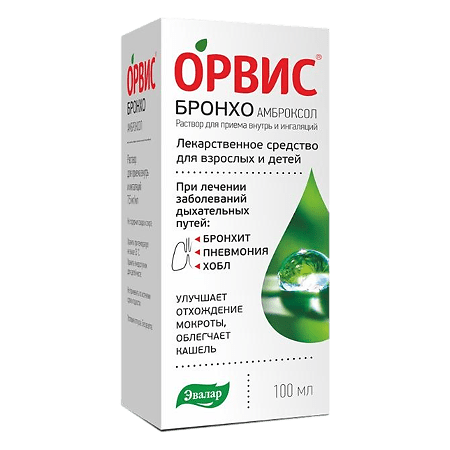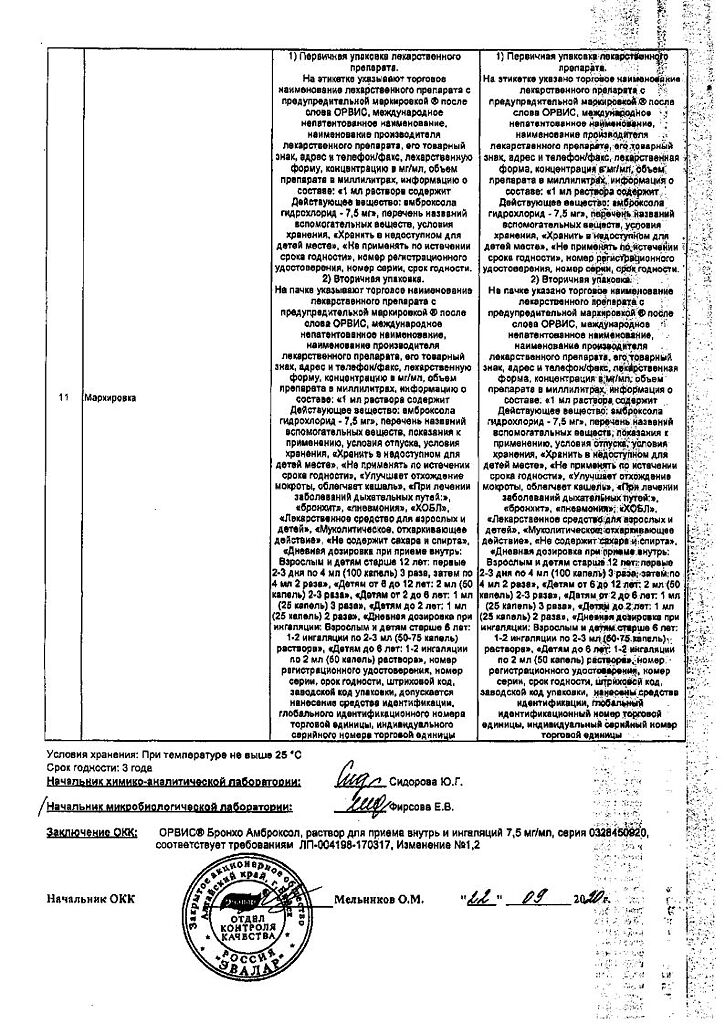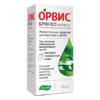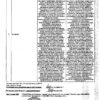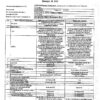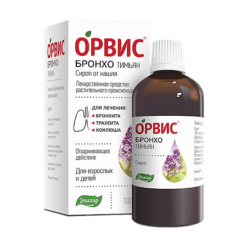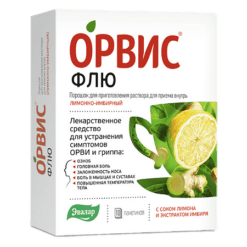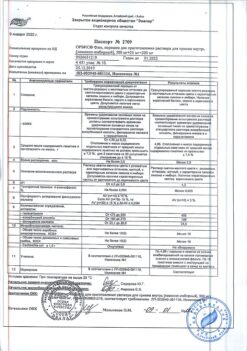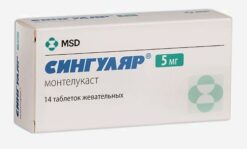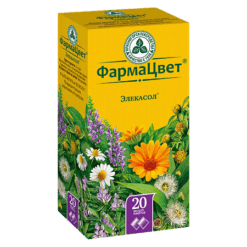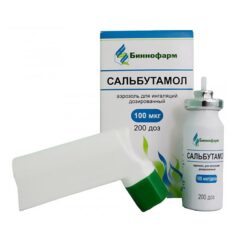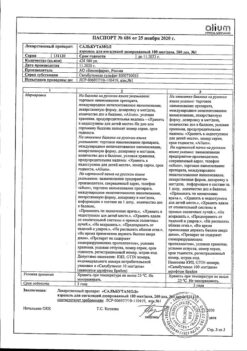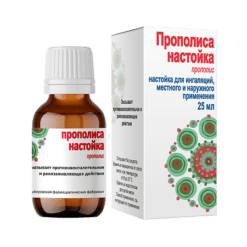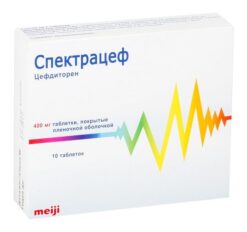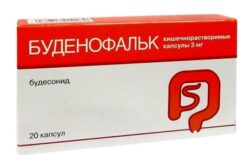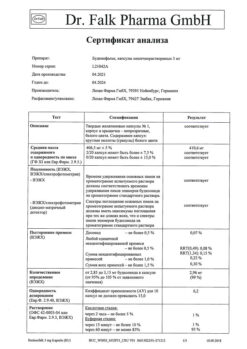No products in the cart.
Orvis Broncho Ambroxol, 7.5 mg/ml 100 ml
€6.92 €5.77
Description
Pharmacotherapeutic group: expectorant, mucolytic agent
ATC code: R05CB06
Pharmacological properties
Pharmacodynamics
Ambroxol is the active N-demethylated metabolite of bromhexine.
It has secretomotor, secretolytic and expectorant effects.
Stimulates bronchial glands, increases motor activity of the atomizing epithelium by influencing type 2 pneumocytes in alveoli and Clara cells in bronchioles, increases formation of endogenous surfactant – surfactant that ensures gliding of bronchial secretion in the airway lumen.
Ambroxol increases the proportion of the serous component in the bronchial secretion, improving its structure and contributing to the reduction of viscosity and liquefaction of sputum; as a result, mucociliary transport (mucociliary clearance) is improved.
Augmenting mucociliary clearance improves sputum removal from the bronchial tree and eases coughing.
On average, when taken orally, the action of the drug comes in 30 minutes, the duration of action is 6-12 hours, depending on the dose taken.
Pharmacokinetics
After oral administration, ambroxol is quickly and almost completely absorbed from the gastrointestinal tract.
The maximum concentration (Cmax) in blood plasma with oral administration is reached after 1-3 hours. Distribution volume is 552 l. In the therapeutic range of concentrations, binding to plasma proteins is 80-90 %. The highest concentrations of the active component of the drug are observed in the lungs.
Ambroxol penetrates through the placental and blood-brain barrier, is excreted with the breast milk.
About 30% of the oral dose taken is subject to the effect of primary passage through the liver.
The studies on human liver microsomes have shown that the CYP3A4 isoenzyme is the predominant isoform responsible for metabolizing ambroxol to dibromanthranilic acid.
The remainder of ambroxol is metabolized in the liver by conjugation to form pharmacologically inactive metabolites.
The terminal elimination half-life (T1/2) of ambroxol from blood plasma is 10 hours.
The total half-life of ambroxol and its metabolites is about 22 hours. Excreted by the kidneys: 90% as metabolites, 10% unchanged.
There is no clinically significant effect of age and sex on pharmacokinetics of ambroxol; therefore, there is no reason to adjust the dosage according to these characteristics.
Indications
Indications
ORVIS Broncho is used in the treatment of acute and chronic diseases with the release of viscous sputum:
— chronic obstructive pulmonary disease
– acute and chronic bronchitis
— pneumonia
— bronchial asthma with difficulty in sputum discharge
— bronchiectasis
Pharmacological effect
Pharmacological effect
Pharmacotherapeutic group: expectorant, mucolytic agent
ATX code: R05СВ06
Pharmacological properties
Pharmacodynamics
Ambroxol is an active N-demethylated metabolite of bromhexine.
It has secretomotor, secretolytic and expectorant effects.
Stimulates the work of the bronchial glands, increases the motor activity of the ciliated epithelium by influencing type 2 pneumocytes in the alveoli and Clara cells in the bronchioles, enhances the formation of endogenous surfactant – a surfactant that ensures the sliding of bronchial secretions in the lumen of the respiratory tract.
Ambroxol increases the proportion of the serous component in the bronchial secretion, improving its structure and helping to reduce viscosity and thin the sputum; as a result, mucociliary transport (mucociliary clearance) improves.
Increasing mucociliary clearance improves the removal of sputum from the bronchial tree and alleviates cough.
On average, when taken orally, the effect of the drug occurs within 30 minutes, the duration of action is 6-12 hours, depending on the dose taken.
Pharmacokinetics
After oral administration, ambroxol is quickly and almost completely absorbed from the gastrointestinal tract.
The maximum concentration (Cmax) in blood plasma after oral administration is reached after 1-3 hours. The volume of distribution is 552 l. In the therapeutic concentration range, binding to plasma proteins is
80-90%. The highest concentrations of the active component of the drug are observed in the lungs.
Ambroxol penetrates the placental and blood-brain barriers and is excreted in breast milk.
Approximately 30% of an oral dose is subject to first pass effects through the liver.
Studies on human liver microsomes have shown that CYP3A4 is the predominant isoform responsible for the metabolism of ambroxol to dibromoantranilic acid.
The remainder of ambroxol is metabolized in the liver by conjugation to form pharmacologically inactive metabolites.
The terminal half-life (T1/2) of ambroxol from blood plasma is 10 hours.
The total half-life of ambroxol and its metabolites is about 22 hours. Excreted by the kidneys: 90% in the form of metabolites, 10% unchanged.
No clinically significant effect of age and gender on the pharmacokinetics of ambroxol was found, so there is no basis for selecting the dosage based on these characteristics.
Special instructions
Special instructions
Ambroxol should not be combined with antitussives that make it difficult to remove mucus.
To maintain the secretolytic effect during the period of use of the drug, it is necessary to ensure that a sufficient amount of fluid enters the body.
In patients with bronchial asthma, ambroxol may increase cough.
The drug contains benzalkonium chloride (a preservative), which, when inhaled, can cause bronchospasm in sensitive patients with increased respiratory tract reactivity.
The drug is not recommended to be mixed with cromoglycic acid and alkaline solutions.
Patients on a hyposodium diet should take into account that 1 ml of the drug contains 10 mg of sodium. The maximum daily dose (12 ml) for adults and children over 12 years of age contains 120 mg of sodium.
There are isolated reports of the identification of Stevens-Johnson syndrome and Lyell’s syndrome, which coincided with the administration of ambroxol, but there is no cause-and-effect relationship with the drug.
In most cases, they can be explained by the severity of the underlying disease and/or concomitant therapy.
Patients with Stevens-Johnson or Lyell syndrome may experience fever, body pain, rhinitis, cough and sore throat in the early phase.
During symptomatic treatment, it is possible to erroneously prescribe mucolytic agents such as ambroxol hydrochloride.
If the above syndromes develop, it is recommended to stop treatment with ambroxol and immediately seek medical help.
In severe renal failure (creatinine clearance less than 30 ml/min), the risk of accumulation of ambroxol metabolites must be taken into account.
The effect of the drug on the ability to drive vehicles and machinery
The drug does not affect the performance of potentially hazardous activities that require increased concentration and speed of psychomotor reactions (driving a car, working with driving mechanisms, etc.).
Active ingredient
Active ingredient
Ambroxol
Composition
Composition
1 ml of solution contains
Active ingredient:
Ambroxol hydrochloride – 7,500 mg
Excipients:
Sodium chloride – 6.220 mg
Sodium hydrogen phosphate dihydrate – 4,350 mg
Citric acid monohydrate – 2,000 mg
Benzalkonium chloride – 0.225 mg
Purified water – 989.705 mg
Contraindications
Contraindications
Hypersensitivity to ambroxol or other components of the drug, pregnancy (first trimester), breastfeeding period.
With caution:
— Renal failure and/or severe liver failure;
– peptic ulcer of the stomach and duodenum during an exacerbation;
— pregnancy (II-III trimester);
– impaired bronchial motility and increased mucus secretion (with immotile cilia syndrome).
Side Effects
Side Effects
Possible side effects are listed in the following gradation: very common (> 1/10), common (> 1/100 to 1/1000 to 1/10000 to <1/1000), very rare (< 1/10000), unknown (cannot be estimated based on available data).Gastrointestinal disorders:Often – nausea, decreased sensitivity in the mouth or throat;Uncommon – dyspepsia, vomiting, diarrhea, abdominal pain;Rarely – dryness of the mucous membrane of the oral cavity and pharynx;Unknown – heartburn, constipation.Respiratory system disorders:Rarely – dryness of the mucous membrane of the respiratory tract, rhinorrhea.Nervous system disorders:Often – dysgeusia (impaired sense of taste).Immune system disorders:Rarely – hypersensitivity reactions, skin rash, urticaria, itching, angioedema;In isolated cases – anaphylactic reactions, including anaphylactic shock. Skin and subcutaneous tissue disorders:Very rarely – toxic epidermal necrolysis (Lyell’s syndrome), Stevens-Johnson syndrome.Other:Unknown – adynamia, fever.
Interaction
Interaction
With the simultaneous use of ambroxol and antitussive drugs, as a result of suppression of the cough reflex, it may be difficult to discharge sputum.
When used simultaneously with amoxicillin, doxycycline, cefuroxime, erythromycin, ambroxol increases their concentration in bronchial secretions.
Overdose
Overdose
Specific symptoms of ambroxol overdose in humans have not been described.
The observed symptoms of overdose were consistent with the known side effects of ambroxol used in recommended doses (nausea, vomiting, abdominal pain, diarrhea, dyspepsia).
Treatment: artificial vomiting, gastric lavage in the first 1-2 hours after taking the drug; intake of fat-containing foods, symptomatic therapy.
Storage conditions
Storage conditions
At a temperature not exceeding 25 °C.
Keep out of the reach of children.
Shelf life
Shelf life
3 years.
Do not use after expiration date.
Manufacturer
Manufacturer
Evalar CJSC, Russia
Additional information
| Shelf life | 3 years. Do not use after the expiration date. |
|---|---|
| Conditions of storage | At the temperature not more than 25 ° C. Keep out of reach of children. |
| Manufacturer | Evalar, Russia |
| Medication form | oral solution and inhalation |
| Brand | Evalar |
Other forms…
Related products
Buy Orvis Broncho Ambroxol, 7.5 mg/ml 100 ml with delivery to USA, UK, Europe and over 120 other countries.

